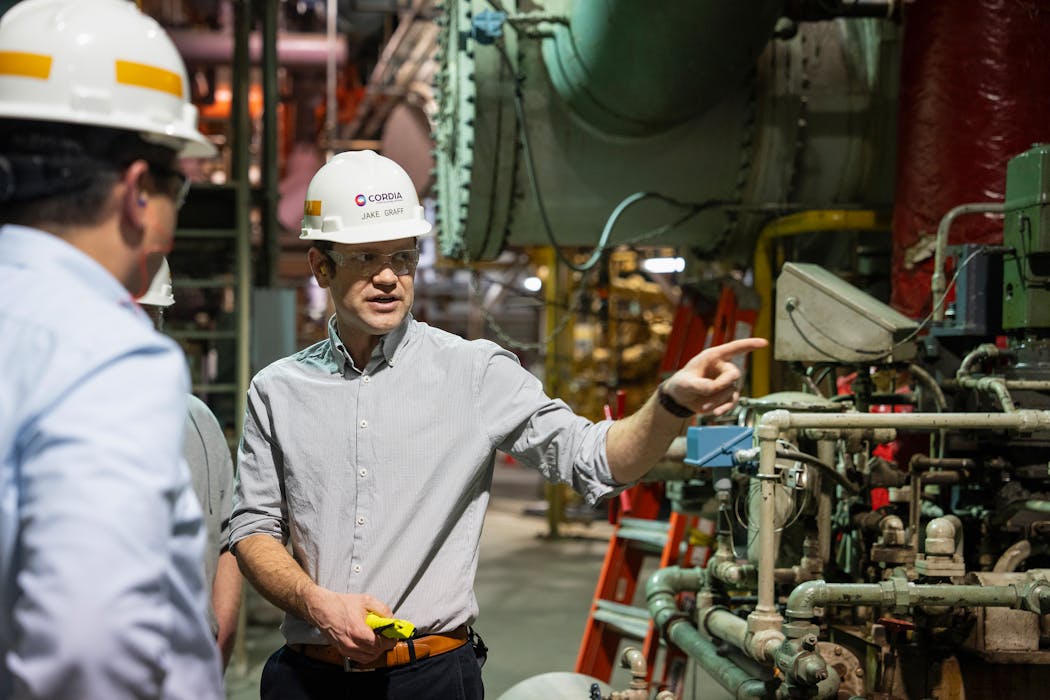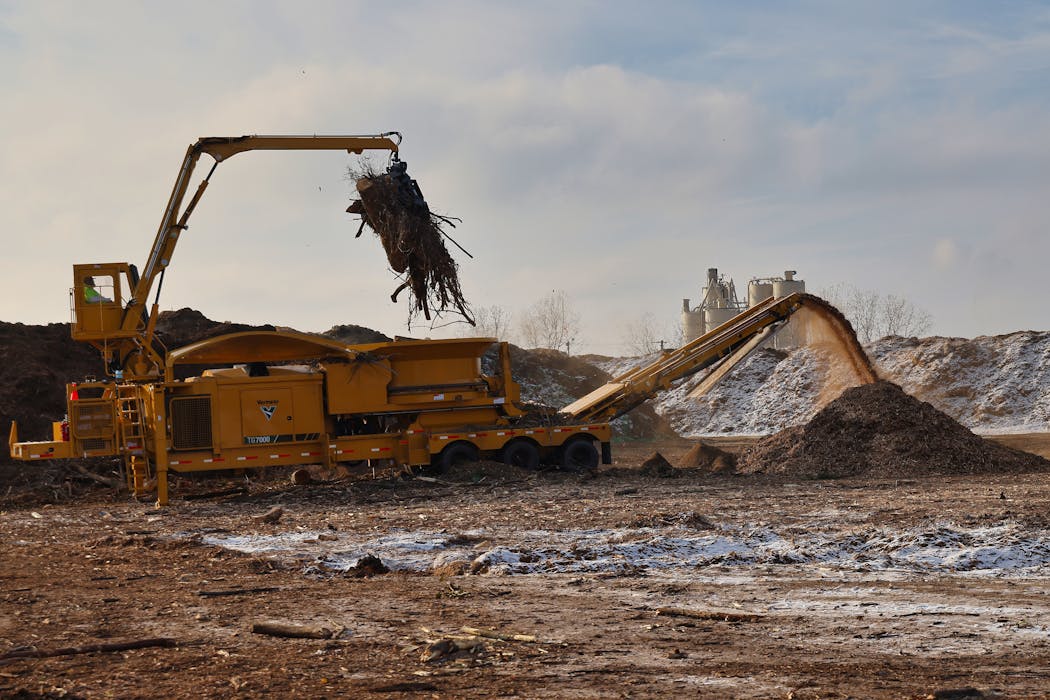Below the downtown streets of Minneapolis and St. Paul is the key to keeping the Twin Cities comfortable on the year's hottest and coldest days.
Most people aren't aware of them, but the centralized district energy systems that span both downtowns heat and cool hundreds of buildings and homes year round — including major structures ranging from the State Capitol, to U.S. Bank Stadium to the IDS Tower.
"The honest truth is, 95% of people or more don't have any idea what we do or that we even exist," said Jacob Graff, regional general manager for Cordia Energy, which heats and cools about 100 buildings across downtown Minneapolis.
Ken Smith, president and CEO of District Energy St. Paul, said his facility also operates in relative obscurity, although many residents are familiar with the plume the site gives off along Kellogg Avenue on cold days.
"It's water vapor," Smith said, noting the system gets about half its energy from burning tree waste. "The colder it is, the more you see it."
How it works
Central facilities create steam or hot water and chilled water that's sent to customers through insulated underground pipes in a closed loop. Satellite locations help with demand.
Buildings and homes use that energy for their heating and cooling needs. When the water is no longer at a useful temperature, it returns to the plants through the piping loop.
Both systems use a process called combined heat and power generation that burns fuel, such as wood chips or natural gas, to power turbines, boilers and water chillers.
How the systems differ
In St. Paul, District Energy and its subsidiary Ever-Green Energy operate the largest hot water heating system in North America, spanning more than 200 buildings. Tree waste is the primary fuel, but natural gas also creates steam that powers a turbine and makes electricity.
About two-thirds of that electricity is sold to Xcel Energy. The remainder helps power the system. Residual, lower-pressure steam makes hot water for heating.
In Minneapolis, Cordia Energy operates a steam centralized heating system. Its biggest plant is in the heart of downtown, encircled by a parking ramp.
Cordia also uses a combined heat and power system with natural gas as the primary fuel. Boilers create heat to produce steam and hot water and run compressors that chill water.
Why are these systems there?
Advocates for district energy systems say they are more efficient than individual heating and cooling systems. They almost never go offline because there is so much redundancy built into the plants.
"The thing about district energy is you need to be there, all the time," Graff said, noting that even brief outages are noticed. "It can be 20 minutes, once every 20 years, but they are going to remember those 20 minutes."
District energy plants have been around more than a century and are growing in popularity. Colleges like the University of Minnesota, hospitals like Hennepin County Medical Center and big cities from New York to San Francisco use them.
When they were built
Minneapolis' system dates to the early 1970s and was built to heat and cool the IDS Center, the city's tallest building. Over the past 50 years the system has grown with the city and now stretches from Target Field to U.S. Bank Stadium.
St. Paul's system rose out of an old steam heating site that was slated for closure in the late 1970s. Instead, then Mayor George Latimer and city officials looked to Swedish engineer Hans Nyman to create a hot-water central heating system they hoped would be a national model.
Biomass and the HERC
The Minnesota Legislature made some policy and spending decisions this year that will affect district energy systems in both cities.
St. Paul District Energy received $16 million in grants to burn ash trees removed because of the emerald ash borer. Policy changes will help the site keep selling excess power to Xcel.
"If we were not taking this wood waste, it would have to be open burned," Smith said.
Changes in state law mean the Hennepin County Energy Recovery Center (HERC), which burns trash to create electricity and steam, will no longer be considered a green energy provider after 2040. Cordia buys steam from the HERC, and Hennepin County officials are looking at plans to close the facility before 2040.
Environmental challenges
District energy systems are efficient, but that doesn't mean they don't have emissions. The St. Paul facility burns about 240,000 tons of tree waste a year. The Minneapolis plant is one of Hennepin County's largest users of natural gas.
But system leaders say their emissions are significantly lower than if each customer was heating and cooling their own building. Both systems aim to be carbon free by 2050.
To get there, Smith said district energy will need to tap into a mix of clean energy sources, something that's not feasible for individual customers. "I can deploy a lot more technologies and techniques than an individual building," he said.
It's already happening. St. Paul provides carbon-neutral cooling to all of its customers through renewable energy credits and uses solar to heat some of its water.
Minneapolis also is exploring cleaner energy sources and constantly looking for ways to be more efficient. "Every project we do has a piece of it that's improving our efficiency," Graff said.
Carolyn Parnell, 'trailblazer' who served as Minnesota's first IT commissioner, dies






